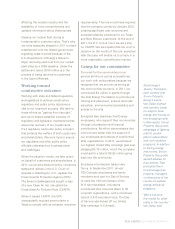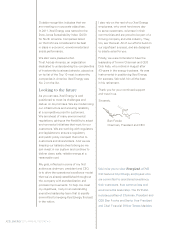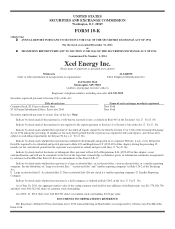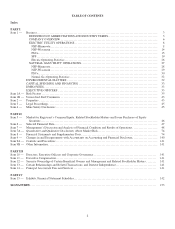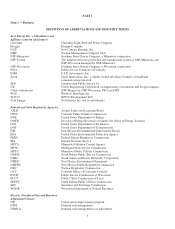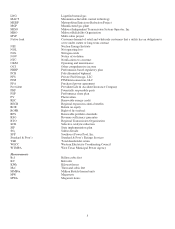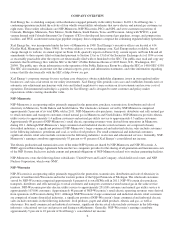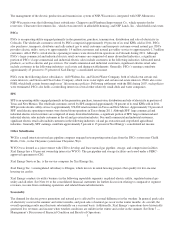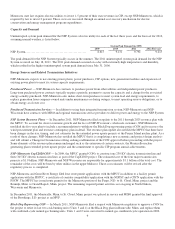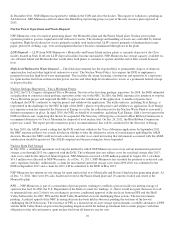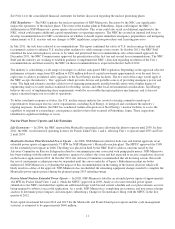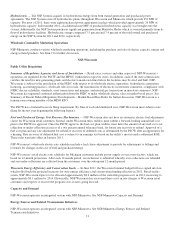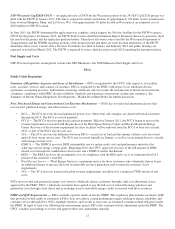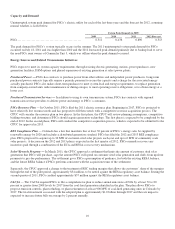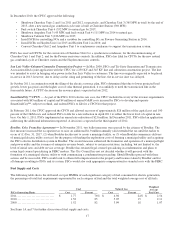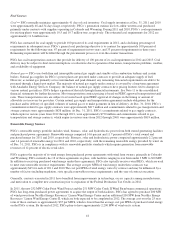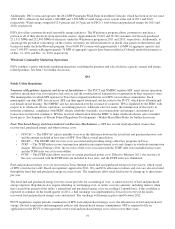Xcel Energy 2011 Annual Report Download - page 19
Download and view the complete annual report
Please find page 19 of the 2011 Xcel Energy annual report below. You can navigate through the pages in the report by either clicking on the pages listed below, or by using the keyword search tool below to find specific information within the annual report.
9
Minnesota state law requires electric utilities to invest 1.5 percent of their state revenues in CIP, except NSP-Minnesota, which is
required by law to invest 2 percent. These costs are recovered through an annual cost-recovery mechanism for electric
conservation and energy management program expenditures.
Capacity and Demand
Uninterrupted system peak demand for the NSP System’s electric utility for each of the last three years and the forecast for 2012,
assuming normal weather, is listed below.
System Peak Demand (in MW)
2009 2010 2011 2012 Forecast
NSP System................................
................
8,615
9,131 9,792 9,213
The peak demand for the NSP System typically occurs in the summer. The 2011 uninterrupted system peak demand for the NSP
System occurred on July 18, 2011. The 2011 peak demand occurred on a day with extremely high temperatures and humidity,
which resulted in the highest uninterrupted system peak demand since July 31, 2006.
Energy Sources and Related Transmission Initiatives
NSP-Minnesota expects to use existing power plants, power purchases, CIP options, new generation facilities and expansion of
existing power plants to meet its system capacity requirements.
Purchased Power — NSP-Minnesota has contracts to purchase power from other utilities and independent power producers.
Long-term purchased power contracts typically require a periodic payment to secure the capacity and a charge for the associated
energy actually purchased. NSP-Minnesota also makes short-term purchases to meet system load and energy requirements, to
replace generation from company-owned units under maintenance or during outages, to meet operating reserve obligations, or to
obtain energy at a lower cost.
Purchased Transmission Services — In addition to using their integrated transmission system, NSP-Minnesota and NSP-
Wisconsin have contracts with MISO and regional transmission service providers to deliver power and energy to the NSP System.
NSP System Resource Plans — In December 2011, NSP-Minnesota filed an update to the 2011 through 2025 resource plan with
the MPUC. To account for slower economic growth and the loss of NSP-Wisconsin’s wholesale customers, NSP-Minnesota
modified the five-year plan to include a recommendation to withdraw the Black Dog repowering project CON and to reassess the
wind procurement plan and resource contingency plan in detail. The resource plan update also notified the MPUC that there have
been changes in the size, timing, and cost estimates for the extended power uprate projects at the Prairie Island nuclear plant. As a
result of these changes, NSP-Minnesota has notified the MPUC that it is completing a new economic and project design analysis
and will submit a Change in Circumstances filing seeking reaffirmation of the CON approval before proceeding with the project.
Some elements of the resource plan remain unchanged such as the extension of certain contracts, the Monticello nuclear
generating plant extended power uprate project and the commitment to specific CIP program annual achievements.
NSP-Minnesota CapX2020 CON — In 2009, the MPUC granted CONs to construct one 230 KV electric transmission line and
three 345 KV electric transmission lines as part of the CapX2020 project. The estimated cost of the four major transmission
projects is $1.9 billion. NSP-Minnesota and NSP-Wisconsin are responsible for approximately $1.1 billion of the total cost. The
remainder of the costs will be born by other utilities in the upper Midwest. These cost estimates will be revised after the
regulatory process is completed.
NSP-Minnesota and Great River Energy filed four route permit applications with the MPUC in addition to a facility permit
application with the SDPUC, a certificate of corridor compatibility application with the NDPSC and a CPCN application with the
PSCW. The MPUC has issued route permits for the Minnesota portion of the Fargo, N.D. to St. Cloud, Minn. project and the
Bemidji, Minn. to Grand Rapids, Minn. project. The remaining required permit activities are on-going in North Dakota,
Wisconsin and Minnesota.
In December 2011, the Monticello, Minn. to St. Cloud, Minn. project was placed in service and MISO granted the final approval
of the Brookings, S.D. project as an MVP.
Black Dog Repowering CON — In March 2011, NSP-Minnesota filed a request with Minnesota regulators to approve a CON for
the project to retire its last two coal-burning units (Units 3 and 4) at the Black Dog plant in Burnsville, Minn. and replace them
with combined-cycle natural gas burning units. Units 1 and 2 were converted to natural gas combined-cycle operation in 2002.


